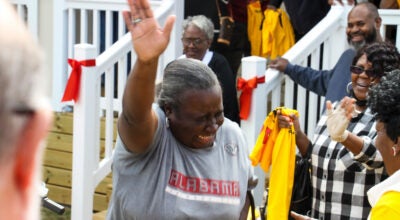Questions, concerns aimed at cameras
Published 10:40 pm Saturday, November 19, 2011
Some residents — and some elected officials — have recently questioned some of the strategies used for the new red light cameras, which have been placed in three locations around Selma.
The cameras, which have been placed at the intersections of J.L. Chestnut Boulevard and Franklin Street, Broad Street and L.L. Anderson, and Dallas Avenue and Hooper Drive, issued 1,400 citations in October alone.
Some wondered how much revenue the tickets have produced for the city. This, Selma Police Department Sgt. Doug Stewart said, is difficult to say right now. Stewart said it would be hard to say exactly how much money they have collected from the 1,400 tickets written because the due dates have not rolled around yet.
Until the tickets are paid, they can be challenged, so it is also difficult to place an estimate on revenue.
Others have asked of the $60 fine, how much does the city keep and collect and how much is used to pay off the software.
This, Stewart said, also depends on how many tickets are paid off.
“If four to five people pay in any given day the city will get $32.50 and American Traffic Solutions receives $27.50,” he said. “But, each tier will be averaged across all operational cameras … which means 16 to 20 people will have to pay their fines in order for the city to be funded this amount. If not, the city will get $12.50 and ATSOL gets $47.50. Tier 3 would have to have 21 or more payees and the city would be funded $43 ATSOL $17. There are four cameras that calculate the average.”
Some motorists have also wondered why some cameras are pointed in only one direction and how the cameras work at night.
The number of violations at each intersection and where the problem areas are, Stewart said, determined the direction. As for night monitoring, Stewart said a flash bulb is used.
When there is a violation, the flash bulb goes off and provides the necessary light to record the information needed.
During this past Tuesday’s Selma City Council meeting, Mayor George Evans and Ward 1 council member Tommy Atchison both admitted they had received tickets from the traffic lights.
Council president Cecil Williamson, someone who has been skeptical of the entire program since it was first proposed, said the intersection at Dallas Avenue and Hooper Drive, he believes, is problematic.
Williamson pointed out the line at the intersection traveling west is not even with Hooper Drive, requiring those who might want to turn right on red, to “run the light.”
Evans said he would ask Public Works director Tommy Smith to see if changes could be made to make the intersection less confusing.




